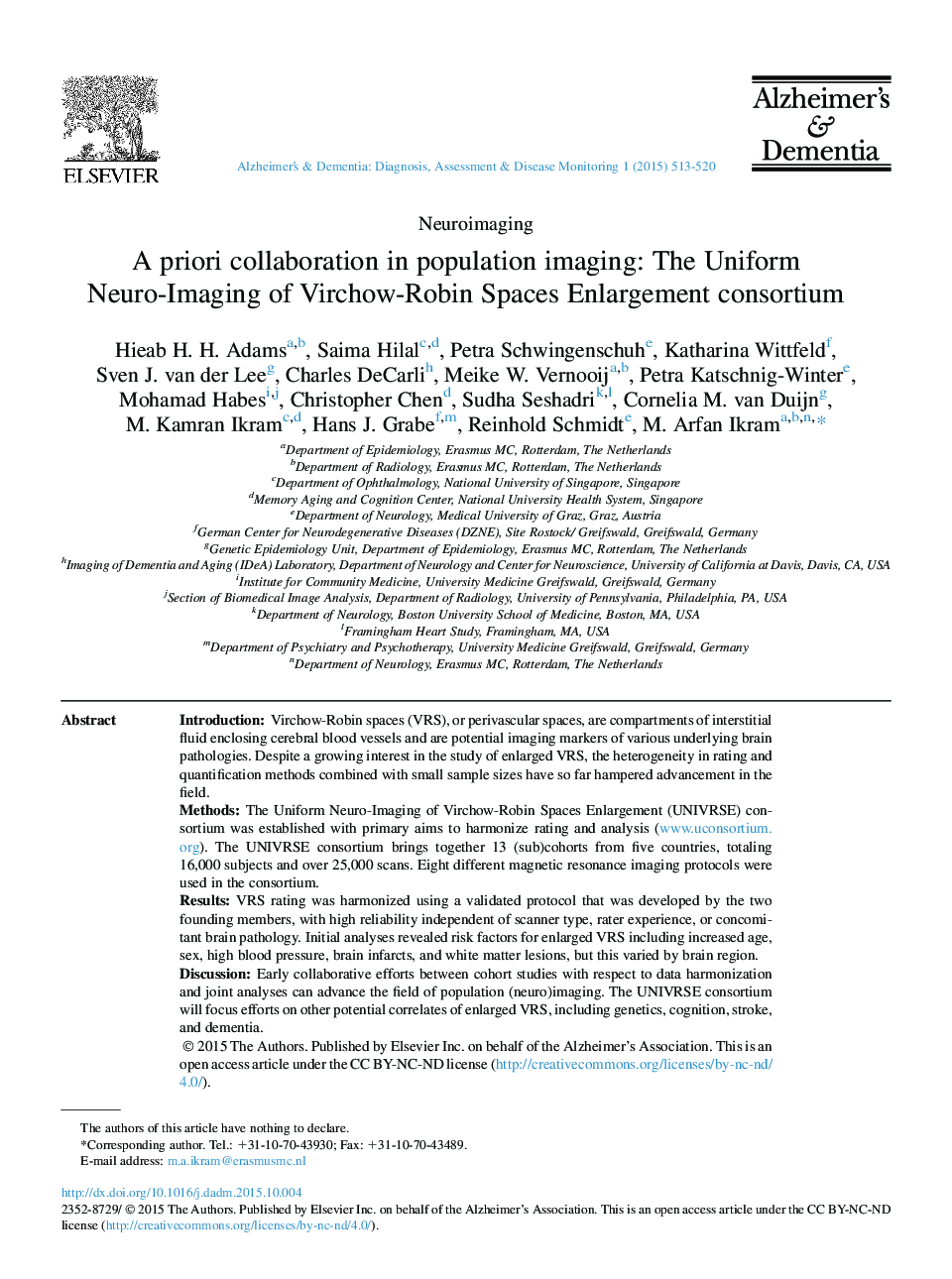| Article ID | Journal | Published Year | Pages | File Type |
|---|---|---|---|---|
| 3031984 | Alzheimer's & Dementia: Diagnosis, Assessment & Disease Monitoring | 2015 | 8 Pages |
IntroductionVirchow-Robin spaces (VRS), or perivascular spaces, are compartments of interstitial fluid enclosing cerebral blood vessels and are potential imaging markers of various underlying brain pathologies. Despite a growing interest in the study of enlarged VRS, the heterogeneity in rating and quantification methods combined with small sample sizes have so far hampered advancement in the field.MethodsThe Uniform Neuro-Imaging of Virchow-Robin Spaces Enlargement (UNIVRSE) consortium was established with primary aims to harmonize rating and analysis (www.uconsortium.org). The UNIVRSE consortium brings together 13 (sub)cohorts from five countries, totaling 16,000 subjects and over 25,000 scans. Eight different magnetic resonance imaging protocols were used in the consortium.ResultsVRS rating was harmonized using a validated protocol that was developed by the two founding members, with high reliability independent of scanner type, rater experience, or concomitant brain pathology. Initial analyses revealed risk factors for enlarged VRS including increased age, sex, high blood pressure, brain infarcts, and white matter lesions, but this varied by brain region.DiscussionEarly collaborative efforts between cohort studies with respect to data harmonization and joint analyses can advance the field of population (neuro)imaging. The UNIVRSE consortium will focus efforts on other potential correlates of enlarged VRS, including genetics, cognition, stroke, and dementia.
